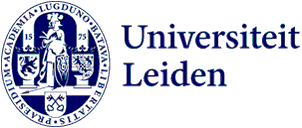Jasper's day
Jasper Knoester is the dean of the Faculty of Science. How is he doing? What kinds of things is he doing and what does his day look like? In each newsletter Jasper gives a peek into his life as dean.

Tuesday 9 January
‘No need for the alarm clock to wake up at 5.30am. The jet lag is doing its job excellently. I have been in Santiago de Chile since yesterday morning, where I am part of the delegation accompanying Minister Dijkgraaf on a knowledge mission to the ESO (European Southern Observatory) facilities this week. It will be a wonderful week that I have been looking forward to. Today we are heading to the oldest ESO site with telescopes, La Silla, located north of Santiago.
I had the opportunity to visit some of the ESO facilities a long time ago, but this week I will see more. It is a privilege to see how fantastic science is done there, with the Netherlands having a huge impact through NOVA. At least as important is travelling together with colleagues from other universities, the ministry, NWO and TNO. There are many moments for informal and relaxed consultation, getting up to date with new developments, exploring opportunities and so on. In short, an ideal week for networking.
After breakfast, we leave for the airport at 7 in the morning, from where we fly to La Serena at 9.30 hrs. I have beautiful views of the Andes from the plane and actually the flight lasts too short for me. After arriving, we take a bus to La Silla. The ride takes two and a half hours. Initially overlooking the Pacific, but once off the highway, with beautiful panoramas of the colourful desert mountain landscape. I sit next to one of the members of the NWO Board of Directors, which provides a good opportunity to talk about current issues affecting science faculties in particular. The first concrete appointment of this week is a fact before we arrive at La Silla.

La Silla is located at 2400 metres, not very high yet, especially if you've been skiing a two weeks ago. Over the week, the sites will get higher and higher, until we peak at ALMA at 5000 metres on Friday. La Silla is where ESO once started, with important impulses from the Netherlands. ESO now has 16 member countries, which work together excellently and are therefore at the world's top with scientific discoveries in astronomy and astrophysics.
After lunch, we are given a number of presentations, then in groups we tour three telescopes out of the more than 10 telescopes that are here. I enjoy the things we see and hear and take dozens of photos. Dinner is excellent and the conversations at the table, this time mainly with one of the directors of the Ministry of OCW, are interesting and useful. I make a follow-up appointment to discuss two topics later.
After dinner, there will be a grand opening by the minister for a new telescope: BlackGEM. A facility with great Dutch input that will detect optical counterparts of the gravitational waves released during collisions of heavy objects, such as neutron stars or black holes. The opening with a few engaging presentations happens entirely outdoors, next to the telescope, beautifully illuminated by the setting sun. Afterwards, we take endless photos of the mesmerising view in the last light of the day. In the dark, we walk back to the "dormitories". There, a small stargazer is set up to look at planets and galaxies. But even with the naked eye, we enjoy the southern night sky that lights up unimaginably beautifully at this altitude in the middle of the desert.
After a visit with the minister to the control room, my energy runs out by midnight. Tomorrow, on to the next site, Paranal, home to the VLT (Very Large Telescope). To be on the safe side, I set the alarm clock, but I don't expect to need it. I'm sure the jet lag and the pleasurable excitement of another special day will do their work again.’
